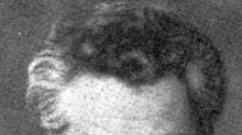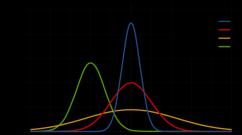Signs of hydroid coelenterates. Classes of coelenterates
COELENTERATES
creeping (Coelenterata, or Cnidaria),
a species-rich and ecologically important type, mainly of marine invertebrates, which are characterized by radial (multi-beam) symmetry of the structure, often giving them an external resemblance to a flower. The second feature is polymorphism. One and the same species can be represented at different stages of the life cycle by completely dissimilar structural types. The main such types are polyp and jellyfish, sometimes having several variants within a species. A polyp is a permanently or temporarily attached (sedentary) form consisting of a cylindrical stem, the free end of which is expanded or turned into a disc and carries tentacles arranged in one or more concentric circles. In the class of hydroids, polyps are usually goblet-wide, called hydrants, and usually form branched colonies that resemble plants. Coral polyps differ from them by the presence of an oral disc: they are solitary or colonial organisms, which include anemones and corals. Medusa is a floating form, consisting of a gelatinous bell (umbrella) with tentacles extending from its edge.
Hydroid (Hydrozoa)... The classification of coelenterates is based on the ratio in their life cycle of the stages of polyp and jellyfish. The class of hydroids is dominated by polyps, usually forming a branched colony attached to the substrate by asexual budding. Jellyfish, usually small and short-lived, also bud from the colony. They represent the sexual phase of the life cycle required for the production of eggs and sperm (usually in different individuals). The fertilized egg develops into a hydrant colony.
Scyphoid, or scyphomedusa (Scyphozoa, or Scyphomedusae).
This class is dominated by the jellyfish stage. Usually it is larger and more complexly arranged than that of hydroids, and lives for several months, reproducing sexually. A fertilized egg, and here, first develops into a polyp (sometimes giving a colony). It is very small and unobtrusive. By means of special transverse division (strobilation), the polyp separates the jellyfish larvae from itself.

Coral polyps (Anthozoa)... In this class, the jellyfish stage is completely suppressed and all species are represented by oral disc polyps. They are solitary or form extensive colonies by asexual budding, sometimes turning into coral reefs. Sexual reproduction takes place at the same stage.


Structure. The coelenterates are arranged relatively simply. Their body is a sac, the wall of which consists mainly of the outer integumentary-protective epithelium (ectoderm) and the internal secretory-digestive epithelium (endoderm), between which there is non-cellular or cell-poor material, ranging from a simple supporting membrane to a thick gelatinous layer, i.e. .n. mesogley. The cavity of the sac, which opens with only one - the oral - opening, is the digestive one. Sometimes it also enters the tentacles. In polyps, the mouth is located at the top of the hydrant or in the center of the oral disc, and in jellyfish, in the center of the lower (concave) side of the umbrella at the end of the protruding proboscis - the handle. In coral polyps, the digestive cavity is divided by longitudinal partitions into several compartments, while in jellyfish it is the so-called. gastrovascular system: the mouth leads into the gastric cavity, from which radial canals diverge, flowing into an annular canal that runs along the edge of the umbrella. The nervous system of the coelenterates is a simple neural network located below the surface of the mainly ectoderm. Also deep in the wall are muscle fibers, which can be basal outgrowths of epithelial cells or independent structures. There are no other systems. Polyps are often surrounded by protective membranes secreted by the ectoderm.
Tentacles. One of the most characteristic features of coelenterates is tentacles, which are absent in only a very few representatives of this group. These are long, slender appendages that can be strongly stretched and contracted, which serve for catching prey and protecting them. The tentacles contain microscopic stinging capsules - nematocysts, which are also one of the most characteristic features of the group. They contain a hollow thread coiled into a spiral, which can be unwound with great force, thrown outward and pierced the surface of the body of small animals. On this thread, poison is injected from the capsule into the victim, which has a paralyzing effect. Naturally, the immobilizing effect is achieved only with the simultaneous "shooting" of many nematocysts. Then the prey is pulled to the mouth opening by tentacles and swallowed. The mechanism that drives nematocysts and the nature of their venom are unknown. It is only clear that their work is stimulated by some kind of mechanical and chemical characteristics of the victim.
Spreading. Almost all coelenterates are marine animals that live mainly in shallow water, where polyps are attached to stones, piles and other objects, and jellyfish swim, rhythmically pushing water out from under their umbrella, and are often carried in large numbers by ocean currents into bays and bays. Some scypho jellyfish live in the open ocean, with some representatives of this class found at great depths. Certain groups of coral polyps, such as madrepore, horn corals and sea feathers, live mainly in the tropics and subtropics, where they form entire underwater gardens, striking with the beauty of shapes and colors. Only very few coelenterates are freshwater; the most famous among them are hydras, which have lost the jellyfish stage and are represented only by polyps.
Collier's Encyclopedia. - Open Society. 2000 .
See what "CAVITY" is in other dictionaries:
Intestinal ... Spelling dictionary-reference
Intestinal ... Wikipedia
Radial (Coelenterata, Radialia), section of invertebrates above the section of eumetazoi. 2 types: cnidarians and ctenophores. Sometimes K. is called. only cnidarians or combine both types into type K. (Source: "Biological Encyclopedic Dictionary." Ch. ... ... Biological encyclopedic dictionary
coelenterates- (wrong coelenterates) ... Dictionary of pronunciation and stress difficulties in modern Russian
Intestinal, a type of invertebrate animals. The most low-organized multicellular. About 9 thousand species; aquatic, mainly marine organisms, solitary floating (jellyfish) and attached, usually colonial (polyps) ... Modern encyclopedia
- (cnidarians) type of invertebrates. The most ancient and low-organized multicellular organisms. 3 modern classes: hydroid, scyphoid and coral polyps. OK. 9 thousand species; mainly marine organisms, solitary swimming (jellyfish) and ... ... Big Encyclopedic Dictionary
- (cnidarians), representatives of about 9000 species of the type Cnidaria are marine invertebrates. These include corals, jellyfish, and sea anemones. They are characterized by the presence of a digestive cavity, which is the main cavity of their body. Exists… … Scientific and technical encyclopedic dictionary
- (Coelenterata), also sometimes called zoophytes, constitute the lowest organized type of all multicellular animals (Metazoa). It embraces sponges (Porifera) and burning K. (Cnidaria) and is characterized by the absence of a detached ... ... Encyclopedia of Brockhaus and Efron
- (Coelenterata) type, including a large and varied gr. primitive multicellular organisms, inhabitants of fresh and sea waters. These include jellyfish, coral, polyps, sea anemones, freshwater hydras, etc. The shape of their body is saccular with ... ... Geological encyclopedia
coelenterates- coelenterates, radial. cnidarians. hydroid: hydra. siphonophores. drug jellyfish. gonionema. scyphoid. coral polyps: corals. sea anemone. madrepore corals. polyps. jellyfish. ctenophores, ctenophores ... Ideographic Dictionary of the Russian Language
coelenterates- - EN coelenterate Animals that have a single body cavity (the coelenteron). The name was formerly given to a phylum comprising the Cnidaria and Ctenophora, but these are now ... ... Technical translator's guide
The Coelenterata type includes about 10 thousand species of marine and freshwater animals. Let us consider the features of the structure and vital activity of coelenterates using the example of a freshwater hydra.
Structure
Hydra has the form of a transparent stem (1 cm long) attached to the substrate. Its lower part is called the sole. There is only one hole in the body of the hydra - a mouth surrounded by tentacles.
The body is composed of two layers of cells:
- ectoderm (outer layer);
- endoderm (inner layer).

Rice. 1. Freshwater hydra.
In the ectoderm and endoderm, there are various cells that do not form organs, but are diffusely located:
- epithelial-muscular;
- interstitial;
- nervous;
- genital;
- stinging.
The epithelial-muscle cells are the most numerous. They perform integumentary, digestive and contractile functions. Hydra, although attached to the substrate most of the time, is able to move in steps and somersaults.
TOP-2 articleswho read along with this
Name hydra given by K. Linnaeus for its ability to regenerate, that is, to restore the body from cut off parts. Hydra was a mythical creature whose severed heads grew back.
All other types develop from interstitial cells.
Nerve cells turn on the response to irritation.
Stinging cells are used in defense and attack. In some jellyfish, they can be life-threatening.
Nutrition
Food with water enters through the mouth into the body cavity, which is the intestine.
Endoderm cells capture food and secrete digestive juices for digestion. After that, nutrients enter the cytoplasm of endoderm cells, and undigested particles are removed through the mouth.
Reproduction
In coelenterates, there are two ways of reproduction:
- asexual;
- sexual.
With asexual reproduction, daughter individuals develop as an outgrowth of the body of the parent individual. Subsequently, they bud off from it.
In some species, daughter individuals are not separated, and then a colony or community of organisms is formed.

Rice. 2. Coral polyps.
During sexual reproduction, male reproductive cells go out into the water and fertilize female ones located in the ectoderm. A larva grows from the zygote, which in some species becomes a polyp, in others a jellyfish.
For many coelenterates, jellyfish and polyp are two successive developmental stages. A jellyfish is called an umbrella-shaped or bell-shaped floating form, a polyp - attached to a substrate.
Classes
In the type of coelenterates, 3 classes are distinguished:
- Scyphoid;
- Hydroid;
Scyphoid jellyfish include scyphomedusa. These are animals of a more complex structure than hydra. They have light-sensitive eyes, organs of smell, movement and balance.

Rice. 3. Medusa Nomura.
The Hydroid class contains 4000 species. Among them, there are both hydromedusa with a polypoid generation and polyps without a jellyfish phase, like a freshwater hydra.
The class of Coral polyps includes 6 thousand species. They live in warm water, not deeper than 20 m. They are motionless, only the larva is capable of moving.
Table "Type of Intestinal"
|
Classes |
Peculiarities |
Habitat |
Intestinal, like sponges, first appeared on earth more than 500 million years ago. They have multicellular organisms and a wide variety of shapes. The coelenterates include sea anemones, jellyfish and corals.
general characteristics
The body of the coelenterates is in the form of a sac with an opening, which is surrounded by tentacles. They can be facing upwards like polyps or downwards like jellyfish. In coelenterates and sponges, a radially symmetric body, that is, body parts are located around a central axis.
Nutrition
The internal cavity in the body of the coelenterates communicates with the surface through a single opening, which serves for food intake and the release of undigested residues. Tentacles are located around the hole, which capture, paralyze and pull the prey inside.
Habitat
Cavities live in warm tropical seas; some of them lead a motionless lifestyle, others are free-swimming. So, hydroids can be both motionless (polyps) and floating (jellyfish); the class of scyphoid is only jellyfish, and the class of coral polyps includes only stationary forms - polyps that live separately or in colonies. Intestinal are multicellular organisms characterized by a simple structure and radial symmetry. Such a structure is very convenient for animals that are not able to move freely: both food and enemies can appear from anywhere, so it is important to be ready for attack or defense from any side.
The body of all coelenterates consists of one internal cavity communicating with the surface through an opening - the mouth, the walls of which perform respiratory functions, serve for eating and removing processed foods.
The mouth is surrounded by tentacles with nettle, or stinging, cells. When a small animal touches one of them, a tubular fiber containing a poisonous liquid is thrown out. Hundreds of such threads dig into the victim, and the tentacles pull it, paralyzed, into the oral cavity. Thus, coelenterates are predators; small fish and crustaceans become their prey. Due to the specific structure of the body, coelenterates are well camouflaged at the bottom and become a sudden trap for their victims.
The type of structure of coelenterates (there are two main types - polyps and jellyfish) during the development of the animal is able to change: the larva can be motionless, in the form of a polyp, and the adult can be mobile, like that of a jellyfish; and vice versa, the larva is mobile, and the adult animal is of an immobile polyp, like in corals.
The walls of the body of coelenterates consist of two rows of cells: one external, it is called ectoderm, and the other internal - endoderm. Between two rows of cells there is a jelly-like layer with a lot of water.
The ectoderm is composed of elongated muscle cells, and the endoderm is rounded. The firing movement, characteristic of jellyfish, is provided by the activity of these two rows of cells, which stretch and contract. Such movements allow the jellyfish to move forward: squeezes push the water out from under the umbrella, and the jellyfish receives a jet propel, like a rocket.
The rest of the cells have transformed into nerve cells and envelop the surface of the body with a net, endowing the jellyfish with sensory organs.
Intestinal polyps are divided into three large classes: hydroid, scyphoid, and coral polyps.
There are 2700 species of hydroids; they are small in size, reproduce only by budding and come in two forms - polyps and jellyfish. They live in isolation, like hydras, or in colonies, like hydrants.
The scyphoid class includes brightly colored jellyfish with large umbrellas; they live only in isolation. There are about 250 species of scyphoid: the largest representative of this class is Arctic cyanea, whose umbrella is more than 2 m in diameter.
Coral polyps are the class of coelenterates with the largest number of species - 6500 species. They are found only in the form of polyps, they can be solitary, like anemones or sea anemones, but more often live in colonies, like corals and madrepores.
The most popular of the coral polyps - red coral - has been known since ancient times in China and Japan; in Europe, it began to be widely used for making jewelry even before our era. For the inhabitants of Tibet in the 13th century BC, red coral was a bargaining chip. In addition, at the end of the 19th century, various healing properties were attributed to corals: coral powder was considered a panacea for many diseases.
Kinds
The noble, or red, coral is found mainly in the Mediterranean Sea at a depth of 20 to 200 m in colonies 10-14 cm high. Other representatives of this species, living in the Sea of Japan, reach 1 m in height and weigh about 40 kg.
For thousands of years, noble coral has been used to make small decorative items and ornaments. It is even found in burials of the 4th century BC.
The part of the coral we see is the outer skeleton, very hard and fragile, formed by small polyps. They form branched colonies that resemble small trees, especially when they move their tentacles, similar to the corolla of flowers.
| A type | Class | Subclass | Detachment | Family | Genus | View |
| Coelenterates | hydroid | hydra | ||||
| scyphoid | jellyfish | |||||
| coral polyps | alcyonaria, or eight-pointed corals | corals, horn corals | ||||
| crustal, or six-rayed corals | madrepora, sea anemones | |||||
 Hydra lives in fresh water. Due to its six slender tentacles, which are six times the length of the hydra itself, it closely resembles algae. Looking at her, it is difficult to imagine that this innocent animal was identified in Greek mythology with a monstrous snake with nine heads, which grew up again every time they were cut off.
Hydra lives in fresh water. Due to its six slender tentacles, which are six times the length of the hydra itself, it closely resembles algae. Looking at her, it is difficult to imagine that this innocent animal was identified in Greek mythology with a monstrous snake with nine heads, which grew up again every time they were cut off.
The structure of the jellyfish is interesting in that this animal is 95% composed of  water, and organic matter makes up only 5% of the total mass. If a large jellyfish is thrown on land, it will completely "melt", and after a few hours nothing will remain on the sand except a small wet speck.
water, and organic matter makes up only 5% of the total mass. If a large jellyfish is thrown on land, it will completely "melt", and after a few hours nothing will remain on the sand except a small wet speck.
 Xenia is a very beautiful tree-like coral, sparkling with its feathered tentacles.
Xenia is a very beautiful tree-like coral, sparkling with its feathered tentacles.
The feather, unlike its coral relatives, has a soft and flexible outer skeleton, which  makes it look like a graceful goose feather. It emits a bright blue-green color, which is why it received the Latin name renatula phosphorea, which means "phosphoric" in Russian.
makes it look like a graceful goose feather. It emits a bright blue-green color, which is why it received the Latin name renatula phosphorea, which means "phosphoric" in Russian.
Anemone verrucoso is a medium-sized anemone (about 3 cm) with a characteristic knobby  leg. In case of danger, she hides her tentacles in her mouth and becomes like a solid ball.
leg. In case of danger, she hides her tentacles in her mouth and becomes like a solid ball.
The gorgonian unicella cavolinia is a very rare coral found in the Mediterranean.  It lives in large colonies, and its branched "crown" reaches 70 cm in length. Unfortunately, the beauty of this coral attracts the attention of poachers.
It lives in large colonies, and its branched "crown" reaches 70 cm in length. Unfortunately, the beauty of this coral attracts the attention of poachers.
In the Mediterranean Sea, you can find the caryophylla clava - a madrepora living in isolation with a thin transparent body.
Representatives of the Intestinal type are multicellular animals with radial (radial) symmetry.
Their body consists of two layers of cells- external (ectoderm) and internal (endoderm), between which the mesoglea is located.
Basically, coelenterates are predators. They have intestinal cavity where food is digested. The cavity communicates with the environment through mouth... There are no other holes (undigested residues are thrown out through the mouth).
Diagram of the structure of coelenterates (for example, freshwater hydra)
Pay attention!
Ectoderm
formed epithelial-muscular, stinging, nervous, genital and intermediate (non-specialized) cells.Endoderm presented digestive-muscular and glandular cells.
Cell functions
1. Epithelial-muscular (skin-muscular) the cells perform the integumentary function, and also have muscle processes that provide the movement of the coelenterate.
2. Stinging cells have a capsule filled with poison that paralyzes the victim (neuroparalytic action). Immersed in a capsule stinging thread... On the surface of the cell is located sensitive hair... When this hair is touched, the stinging thread is thrown out and enters the victim's body.
Diagram of the structure of the stinging cell
3. Nerve cells have long processes that together form a neural network. This nervous system is called diffuse.
The nervous system and the perception of hydra irritation
4. Sex cells provide sexual reproduction of coelenterates.
5. The glandular cells produce enzymes that digest food in the intestinal cavity (this intracavitary digestion).
6. Digestive-muscular cells have flagella and pseudopods. Flagella move water with food particles, and the resulting pseudopods capture it. Further digestion occurs in the digestive vacuoles (this intracellular digestion).
7. Non-specialized (intermediate) cells are able to transform into any type of cells, and provide regeneration (restoration of lost parts) of coelenterates.
Cnidocilus- sensitive hair of stinging cells of coelenterates.
Enzymes- biologically active substances that accelerate the processes taking place in the cell. Digestive enzymes speed up the digestion process.
Reproduction
Reproduction of coelenterates occurs sexually and asexually.
Asexual reproduction occurs by budding.
In the case of sexual reproduction, the larval stage develops from the fertilized egg. Having attached to the bottom, the larva turns into a polyp. Polyps either form colonies or bud off free-living jellyfish. Here we can talk about the alternation of generations: an attached polyp and a free-living jellyfish.
The value of coelenterates
Coral polyps, Coral polyps, form reefs, and sometimes entire islands - atolls - that represent specific ecosystems.
Representatives of this group of animals have an intestinal cavity in which the food captured by them is digested. But the digestion of food in coelenterates occurs not only in the intestinal cavity, but also in individual cells lining the walls of the cavity. In other words, along with intra-intestinal digestion, intracellular digestion is also carried out, which indicates a low stage of the evolutionary development of these animals.
As a protection, coelenterates have special stinging species cells characteristic of the simplest unicellular organisms. The coelenterates are primarily coral polyps where a lot of different fish live and jellyfish Which can be highly toxic not only in tropical seas, but also in more northerly waters. In particular, a relatively small jellyfish is found in the Pacific Ocean. cross contact with which is dangerous to humans.
Sea wasp, belonging to the box jellyfish, is one of the most dangerous marine animals. Its poison acts primarily on the heart, as a result of which paralysis of the heart muscle can occur in a short time after the defeat - from 30 seconds to several minutes. During this time, a person in the water, confused, will not be able to help himself. The people nearby will not be able to provide help either. Often, the defeat of the poison of the sea wasp ended in the death of a person right in the water. Very poisonous and chiropsalmus... Its poison in terms of its effect on the human body is close to that of a sea wasp. A person can die from his burn in 3 - 8 minutes.
If we consider in more detail the poisonous apparatus of coelenterates, then first of all, attention is drawn to specially arranged cells, which are mainly located on their tentacles in the surface layer of tissue. Each stinging cell has a formation that looks like a bubble. It got the name -. In a bubble in the form of a coiled spiral lies a hollow filamentous tube, while the bubble itself is filled with a poisonous liquid. On the outer surface of the stinging cell there is a motionless sensitive hair -. It is the touch of the cnidocyle that is instantly transmitted to the stinging cell, and the thread, being thrown out, digs into the victim's body, pouring poison into it. Of course, more than one of these cells will be set in motion upon contact with an animal. A diver, when meeting with a coelenterate, touches thousands of such stinging cells.

First of all, it should be noted that in comparison with the poisons of many poisonous animals, the poisons of coelenterates are poorly studied. There are many reasons for this, including the difficulty of catching in the required quantity and the difficulty of keeping it in laboratory conditions. Signs of poisoning with the poisons of these animals can be different. It depends on the type of animal, as well as on which part of the body the poison enters and how sensitive a person is to this poison. For example, pricks and stings are most dangerous in the upper third of the body, especially in the face and neck. Children are always more sensitive to any poison than adults.
Poisons of a protein nature, among which there are toxic proteins - polypeptides, both devoid of enzymes and containing them, were first discovered in coelenterates.
The stinging apparatus of coelenterates sometimes causes a weak local reaction of the body in the absence of a general reaction, and sometimes it acts like an electric shock. This is typical of some box jellyfish, whose stinging cells penetrate deeply into the human skin, as well as for cyanogen, physalium, stinging coral... Imagine that in the depths of water you are struck with an electric shock or a red-hot iron is applied to your body. You can drown from lightning shock.
Spreading pain can be throbbing or shooting, sharp. On the skin, exudative blisters, skin hemorrhages, typical of severe lesions, may occur. The affected areas take on different shapes, depending on what shape and size the tentacles of the poisonous animal were, what part of them touched the human skin. Among the coelenterates there are animals called anemones, the venom of these beautiful animals, which outwardly resembles a blossoming flower, does not pose a serious danger to humans, but nevertheless there is the so-called "sponge catcher disease", which occurs when meeting with a pink anemone. When it burns, large ulcers form on the skin of a person. The affected area of the skin can change color up to black, and the skin in this area significantly loses its sensitivity.

Actinia is an animal that causes "sponge catcher disease"
In severe cases that occur with lesions of the most dangerous scyphomedusa by the tentacles, a general reaction of the body is also observed, expressed in the following symptoms:
- chills;
- nausea ending with vomiting;
- shortness of breath, due to difficulty breathing or the heart's reaction to poison;
- pains occur in the muscles and joints, there may be muscle spasms;
- diarrhea.
can lead to a change in the composition of the blood - eosinophilia, leukocytosis, increased ROE. Often there are also, in which it is recommended to introduce antihistamines. An allergic reaction occurs in response to the influence of a factor that is difficult for the body to tolerate. For example, a foreign protein in animal venom. With allergies, the body throws some substances into the bloodstream, including histamine. Allergic reactions in some sensitive individuals can even cause anaphylactic shock, when the pulse drops sharply and the heart stops working.













